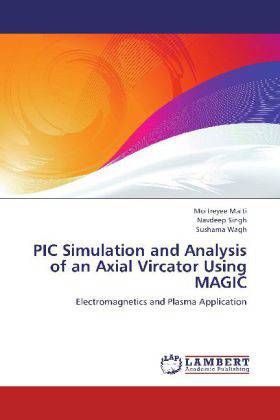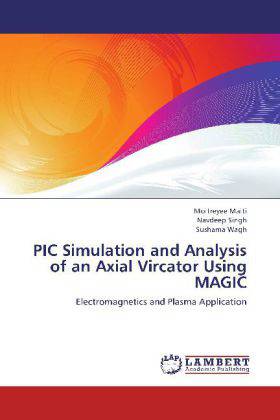
- Afhalen na 1 uur in een winkel met voorraad
- Gratis thuislevering in België vanaf € 30
- Ruim aanbod met 7 miljoen producten
- Afhalen na 1 uur in een winkel met voorraad
- Gratis thuislevering in België vanaf € 30
- Ruim aanbod met 7 miljoen producten
Zoeken
PIC Simulation and Analysis of an Axial Vircator Using MAGIC
Electromagnetics and Plasma Application
Moitreyee Maiti, Navdeep Singh, Sushama Wagh
Paperback | Engels
€ 48,45
+ 96 punten
Omschrijving
The virtual cathode oscillator (vircator) is a high power microwave (HPM) source capable of generating microwaves of high power and frequency. This book describes the Particle-In-Cell(PIC) simulation and analysis of an axial vircator using a three dimensional PIC code - MAGIC which is based on the Finite Difference Time Domain(FDTD) and PIC techniques. It is an electromagnetic specific code involving space charge interactions. The axial vircator has been designed for a high pulsed power system that acts as a source of intense relativistic electron beam(IREB). The IREB used is typically of 200kV, 100ns. With changing anode-cathode (AK) gap, proportionality of HPM output frequency and HPM output power with AK gap was established respectively. As the IREB voltage levels were changed and the space charge limited current was observed, it was proved that the space charge limited current is dependent on the IREB voltage. On using different metals for the anode mesh, it was observed that copper is ideally suited for the anode mesh of an axial vircator. As the cathode radius was varied, the Child-Langmuir current was observed to vary as the square of the radius of the emitter area.
Specificaties
Betrokkenen
- Auteur(s):
- Uitgeverij:
Inhoud
- Aantal bladzijden:
- 100
- Taal:
- Engels
Eigenschappen
- Productcode (EAN):
- 9783659184628
- Uitvoering:
- Paperback
- Afmetingen:
- 150 mm x 220 mm
- Gewicht:
- 168 g

Alleen bij Standaard Boekhandel
+ 96 punten op je klantenkaart van Standaard Boekhandel
Beoordelingen
We publiceren alleen reviews die voldoen aan de voorwaarden voor reviews. Bekijk onze voorwaarden voor reviews.











